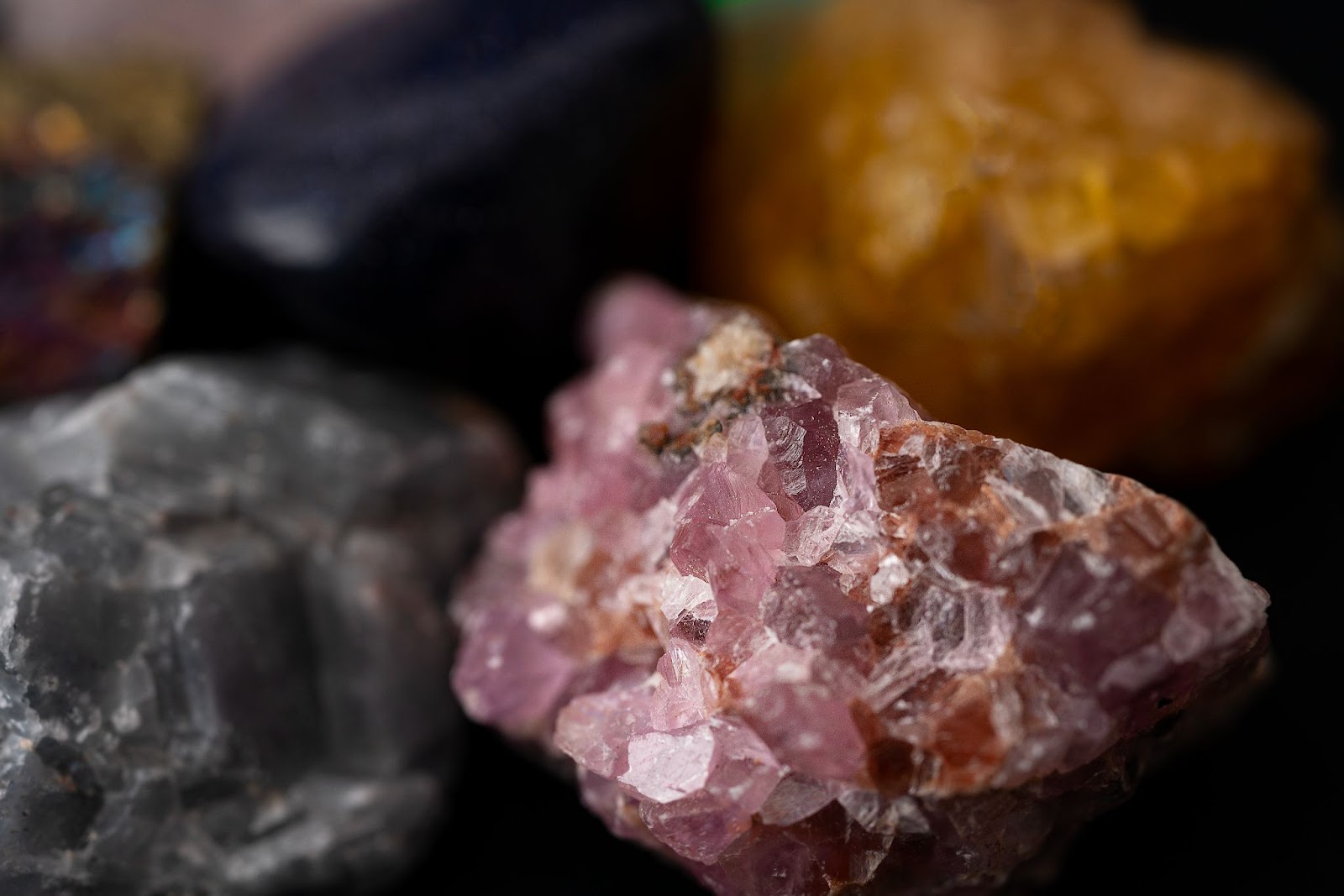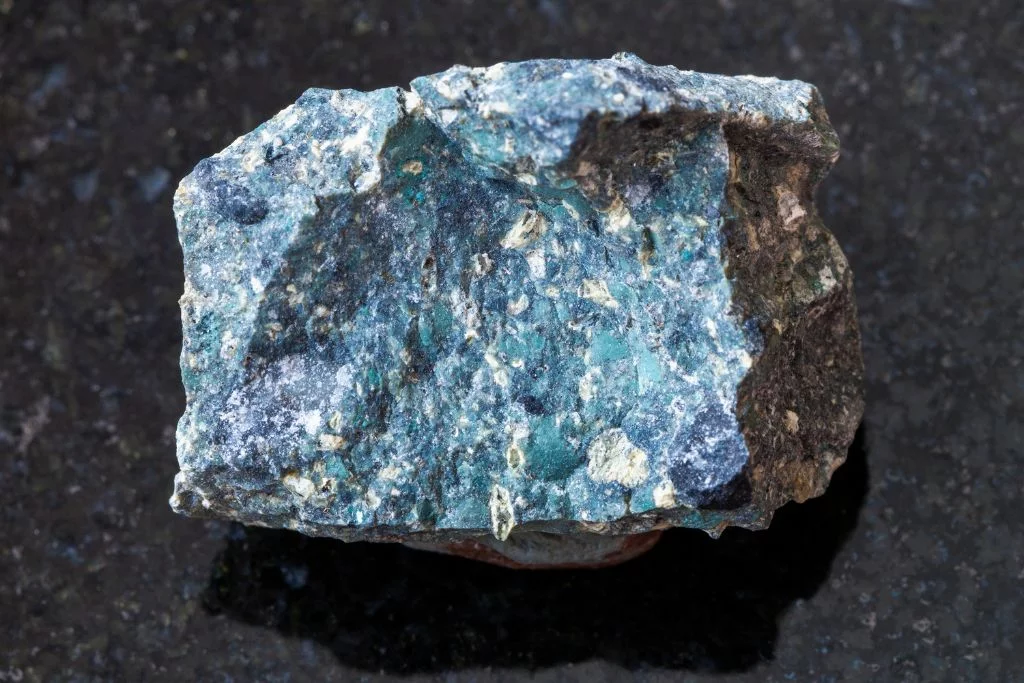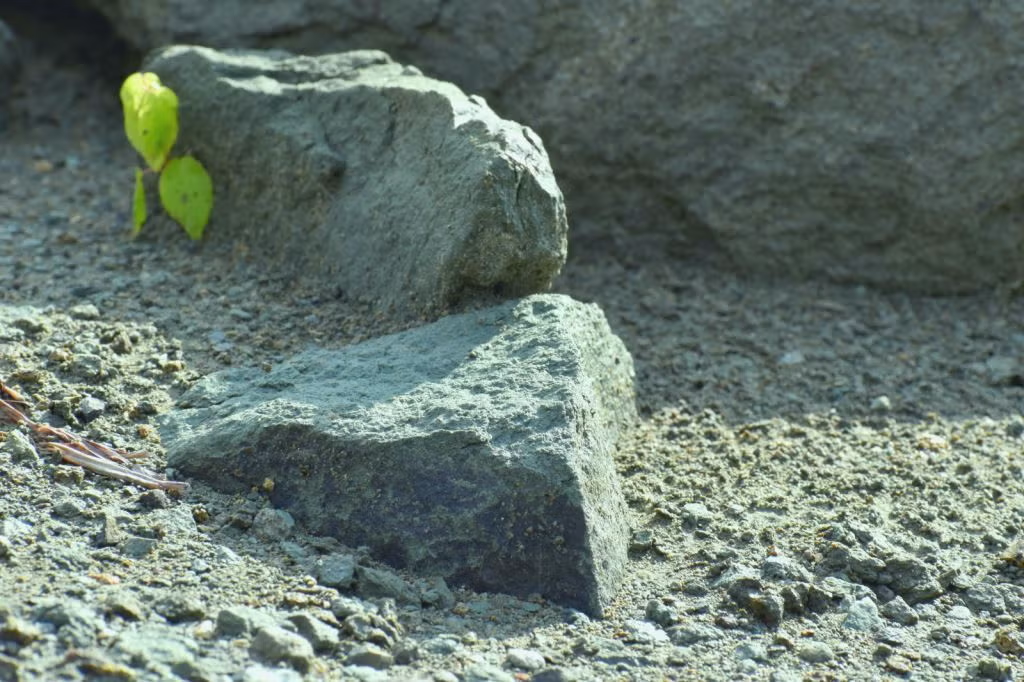If you ever stumbled upon identifying diamond rock on whether it is a natural rough diamond or a lab-grown diamond, chances are you would not recognize it. That is because rough diamonds look very different from the polished and sparkling stones we are so used to seeing.
In reality, a rough diamond rock looks entirely different from the sparkling gem you see in a showroom.
Natural diamond rocks are formed deep within the Earth under extreme pressure and heat, while lab-grown diamonds are created in advanced laboratories that replicate those same natural conditions.
Both are chemically and optically identical, but they start their journey very differently. And unless you know what to look for, it is easy to confuse a raw diamond with other shiny stones or even lab lab-grown diamond.
In this guide, we will help you understand the difference between diamond rocks found in nature and lab-grown diamond formations, so you can easily identify each of them.
What Are Diamond Rocks?
Diamond rocks are the geological carriers that transport diamonds from depths of 90-120 miles beneath the Earth's surface to areas where we can get them. The two primary types are kimberlite pipes and lamproite deposits.
Kimberlite pipes are vertical, carrot-shaped volcanic openings formed by explosive eruptions that occurred millions of years ago. These eruptions traveled at supersonic speeds, carrying diamonds and other minerals from the mantle to the surface in a matter of hours. Kimberlite is named after Kimberley, South Africa, where it was first identified as a diamond-bearing rock in the 1870s.
Lamproite deposits are less common but equally important diamond sources. Like kimberlite, lamproite is a basic volcanic rock, but it has a different mineral composition and formation process. The Argyle mine in Australia, famous for pink diamonds, was primarily a lamproite deposit.
Diamonds form under extreme pressure and temperature conditions found only in the Earth's mantle. When kimberlite or lamproite magma erupts rapidly, it preserves these diamonds rather than allowing them to convert back to graphite.
Where Are Diamond Rocks Found?
Diamond-bearing rocks are not randomly distributed across the globe. They occur in specific geological settings, primarily in ancient continental regions called cratons with stable portions of the Earth's crust that are billions of years old.
The most productive diamond regions include:
- South Africa (Kimberley, Premier)
- Botswana (Orapa, Jwaneng)
- Russia (Yakutia, Arkhangelsk)
- Canada (Northwest Territories, Nunavut)
- Australia (Argyle, Ellendale)
- Angola
These areas have produced the majority of the world's natural diamonds.
Diamonds can also be found in alluvial deposits, that is, secondary locations where erosion has transported diamond-bearing rocks and released diamonds into riverbeds, beaches, and sediments. Famous alluvial diamond fields exist in Namibia, Sierra Leone, and Brazil. While alluvial diamonds are easier to extract, identifying the primary source rocks provides more reliable prospects for commercial mining.
What Do Diamond Rocks Actually Look Like?
Here are a few characteristics of diamond rocks:
Kimberlite Rock Features
Source: Kimberlite
Identifying kimberlite requires attention to several distinctive physical characteristics, including:
Color: Fresh kimberlite typically appears bluish-green to dark gray. This characteristic blue tint, often called "blue ground," is one of the most recognizable features. Weathered kimberlite, exposed to surface conditions, oxidizes to a yellowish-brown color known as "yellow ground".
Texture and Composition: Kimberlite has a distinctive porphyritic texture, meaning it contains larger crystals (phenocrysts) embedded in a fine-grained matrix. The rock often appears fragmented with angular pieces of various minerals. It may contain visible olivine crystals (green, glassy appearance), mica flakes that shimmer, and serpentine minerals resulting from olivine alteration.
The rock often feels greasy or soapy to the touch due to serpentine content and may be relatively soft compared to harder volcanic rocks like basalt. Kimberlite also tends to erode faster than surrounding rocks, sometimes creating depressions in the landscape.
Lamproite Rock Features
Source: Discovering Lamproite at the Crater
Lamproite shares some similarities with kimberlite but has distinct characteristics that help differentiate the two.
Lamproite typically ranges from gray to purple-gray or brownish in color. It contains high concentrations of potassium and magnesium, along with distinctive minerals like leucite, phlogopite mica (bronze-colored sheets), and richterite. The texture can vary from fine-grained to porphyritic.
One key difference is that lamproite often appears darker and may have extreme visibility of mineral crystals to the naked eye. It is generally harder than kimberlite and less prone to atmospheric conditions.
How to Identify Diamond Rocks?
Listed below are a few methods to identify rock-bearing diamonds:
Visual Inspection
The first step in identifying potential diamond rocks is careful visual examination. Look for the characteristic colors described earlier, bluish-green to gray for fresh kimberlite or purple-gray for lamproite. Examine the texture for the fragmented, mixed appearance typical of these explosive volcanic rocks.
Search for indicator minerals within the rock. A hand lens (10x magnification) is invaluable for spotting small garnets, chrome diopside crystals, or metallic ilmenite grains. In rare cases, you might spot an actual diamond, which typically appears as a translucent to transparent octahedral (eight-sided) crystal with a greasy or adamantine luster.
Pay attention to the geological context. Diamond rocks often occur as pipes or dikes that cut through surrounding formations. Look for circular or oval surface expressions, especially in areas with known diamond potential.
Explore our blog on diamond shape and size to learn more about how different cuts and proportions affect a diamond’s appearance.
Testing Methods
Beyond visual inspection, several tests can help confirm your identification:
1. Hardness Testing
While you are unlikely to test the hardness of an actual diamond in the field (since diamonds are the hardest natural substance at 10 on the Mohs scale), you can test the host rock. Kimberlite is relatively soft, typically between 3-6 on the Mohs scale, and can often be scratched with a knife.
2. Specific Gravity
Diamond-bearing rocks, especially those containing abundant heavy minerals like garnet and ilmenite, have higher specific gravity (density) than average rocks. A simple weight-in-water test can provide clues, though this requires proper equipment.
3. Magnetic Properties
Crushing a small sample and testing it with a strong magnet can reveal magnetic minerals like magnetite and ilmenite, which are common in kimberlite. This is a destructive test and should only be done with permission on your own samples.
4. UV Light Testing
Some diamonds fluoresce under ultraviolet light, glowing blue or other colors. While not all diamonds fluoresce, a portable UV lamp can sometimes reveal diamonds in broken rock samples.
Professional Analysis
If you think you have found a diamond rock, here are the most reliable methods to confirm it:
- X-ray Diffraction (XRD): This technique identifies the exact mineral composition of a rock by analyzing its crystalline structure. It is the standard for confirming kimberlite or lamproite.
- Spectroscopy: Various spectroscopic methods can identify mineral chemistry and detect indicator minerals even in small quantities.
- Petrographic Analysis: Thin sections examined under a polarizing microscope reveal the detailed texture and mineralogy that identify diamond-bearing rocks.
- Geochemical Analysis: Testing for specific trace elements characteristic of kimberlite or lamproite provides strong supporting evidence.
These methods provide scientific proof of a rock’s composition and are the most accurate way to confirm if it truly contains diamonds.
Why This Matters for Diamond Buyers?
Understanding how diamonds form helps you ask the right questions and make confident choices. If a seller claims to offer “natural diamonds at lab-grown prices,” you should be cautious because natural mining, cutting, and distribution are far more expensive. If a diamond’s origin or certificate is unclear, that is a warning sign.
Lab-grown diamonds are not imitations; they are real diamonds made with advanced technology instead of mining. The lower price comes from efficient and ethical production, not from lower quality.
With this knowledge, you can make decisions based on what truly matters rather than marketing claims.
Learn more in our guide on lab-grown vs natural diamonds to understand what truly sets them apart.
The Smarter Alternative: Lab-Grown Diamonds
Finding diamond rocks takes more than luck. It requires understanding how diamonds form, spotting the right geological signs, and confirming results through expert testing. Whether you’re exploring nature or simply curious about the process, the smartest approach combines knowledge with professional verification.
But if your goal is to own a real, brilliant, and ethically sourced diamond, there is a simpler and smarter way. At Solitaire Lab Diamond, every lab-grown diamond is created with precision, crafted to perfection, and certified for authenticity.
So skip the hunt and choose brilliance instead, with the same radiance and flawless finish at a far more affordable price.
Explore our collection of certified lab-grown diamonds today.





